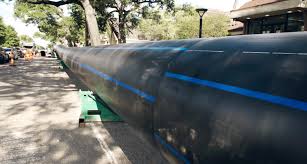Dec . 21, 2024 22:27 Back to list
hdpe pipe price product
Understanding HDPE Pipe Prices Factors and Insights
High-Density Polyethylene (HDPE) pipes have become increasingly popular in various industries due to their durability, flexibility, and resistance to corrosion. They are commonly used for water supply, wastewater management, and gas distribution. Understanding the price dynamics of HDPE pipes is essential for contractors, engineers, and decision-makers involved in construction and infrastructure projects. This article delves into the factors influencing HDPE pipe prices, current market trends, and makes a case for their long-term value.
Factors Influencing HDPE Pipe Prices
1. Material Costs The primary component of HDPE pipes is, of course, high-density polyethylene, which is derived from petroleum. Fluctuations in crude oil prices can significantly impact the cost of HDPE resin. As oil prices rise, so too do the production costs for HDPE pipes, resulting in higher prices for consumers.
2. Demand and Supply Dynamics The construction and infrastructure sectors drive demand for HDPE pipes. When there is a surge in construction projects, the demand for HDPE pipes increases. Conversely, if the supply is limited due to manufacturing constraints or raw material shortages, prices will rise. Economic conditions also influence this dynamic; during economic booms, demand tends to spike.
3. Manufacturing Technology Advancements in manufacturing technology can significantly affect production efficiency and, consequently, prices. Innovative manufacturing techniques that reduce waste and increase output can lead to lower prices for consumers. On the other hand, any disruptions in production, such as machine failures or labor shortages, can lead to higher costs.
4. Regulatory Compliance HDPE pipes must adhere to various regulations and standards, which vary by region and application. Compliance with these standards often involves added costs that can influence pricing. Additionally, increased scrutiny and stricter regulations can lead manufacturers to incur higher compliance costs, which are typically passed on to consumers.
5. Market Competition The level of competition among manufacturers can greatly influence pricing. In markets with many suppliers, prices tend to be lower due to competitive pressures. Conversely, in markets dominated by a few significant players, prices may be higher. Additionally, companies that offer more extensive warranties or better quality products may justify higher prices based on perceived value.
hdpe pipe price product

6. Pipe Size and Specifications HDPE pipes come in various sizes and specifications tailored for specific applications. Larger pipes typically cost more due to the increased material usage and manufacturing complexity. Custom specifications, such as enhanced pressure ratings or specialized fittings, can also lead to higher costs.
Current Market Trends
As of 2023, the demand for HDPE pipes is on the rise, driven by increasing infrastructure development and a push towards sustainable materials in construction. Regions such as Asia-Pacific and North America are experiencing significant growth due to urbanization and the need for modern water supply and drainage systems. However, the industry faces challenges, such as raw material price fluctuations and supply chain disruptions stemming from geopolitical tensions and environmental issues.
Additionally, the global shift towards environmentally friendly materials has placed HDPE pipes in a favorable position since they are recyclable and have a lower environmental impact compared to traditional materials like PVC or metal. This growing awareness and shift towards sustainability are expected to drive HDPE pipe prices positively over the next few years.
Long-Term Value of HDPE Pipes
While HDPE pipes may have a higher upfront cost compared to some alternatives, the long-term benefits often outweigh the initial investment. Their durability and resistance to corrosion and chemicals mean reduced maintenance and replacement costs over time. Moreover, their lightweight nature allows for easier handling and installation, which can save on labor costs.
In conclusion, understanding the intricacies of HDPE pipe pricing involves analyzing materials, production, demand, and market trends. For those in the construction and infrastructure industries, making informed decisions based on a comprehensive understanding of these factors can lead to better project outcomes and cost efficiencies in the long run. As the global market continues to evolve, HDPE pipes remain a valuable investment in sustainable infrastructure development.
-
High-Quality PVC Borehole Pipes Durable & Versatile Pipe Solutions
NewsJul.08,2025
-
High-Quality PVC Perforated Pipes for Efficient Drainage Leading Manufacturers & Factories
NewsJul.08,2025
-
High-Quality PVC Borehole Pipes Durable Pipe Solutions by Leading Manufacturer
NewsJul.08,2025
-
High-Quality PVC Borehole Pipes Reliable PVC Pipe Manufacturer Solutions
NewsJul.07,2025
-
High-Quality UPVC Drain Pipes Durable HDPE & Drain Pipe Solutions
NewsJul.07,2025
-
High-Quality Conduit Pipes & HDPE Conduit Fittings Manufacturer Reliable Factory Supply
NewsJul.06,2025

